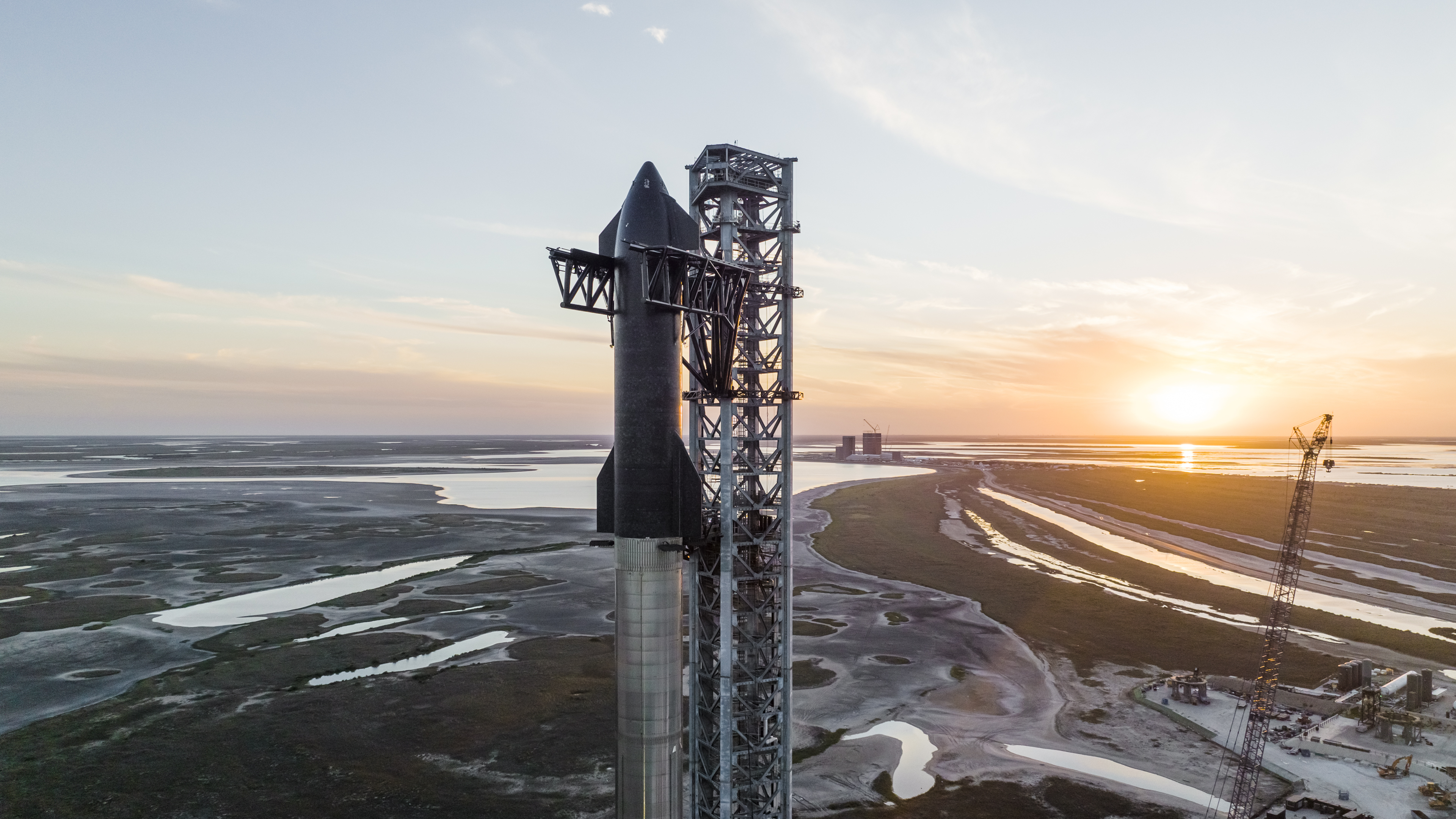When SpaceX attempts to launch its Starship, the world's biggest rocket, for the first time on April 17, the world will be watching and you can, too, with a free webcast from the private spaceflight company.
SpaceX's first Starship test flight is currently set to launch from the company's Starbase facility near Boca Chica Village in South Texas no earlier than Monday, April 17. Liftoff is targeted for 8 a.m. EDT (7 a.m. CDT/1200 GMT) at the start of a launch window that runs for 150 minutes (through 10:30 a.m. EDT/1430 GMT). SpaceX's webcast is scheduled to begin 45 minutes before liftoff, making its start at 7:15 a.m. EDT (1115 GMT). You can watch it live above and on the Space.com homepage at start time, or watch it directly from SpaceX's webcast and its YouTube channel.
"Success maybe, excitement guaranteed!" SpaceX founder Elon Musk wrote on Twitter after the company secured its Starship launch license from the Federal Aviation Administration late Friday (April 14).
Related: How SpaceX's 1st Starship orbital launch will work
SpaceX's first nearly orbital Starship launch will launch the company's Starship SN24 prototype on a Super Heavy booster (called Booster 7) to prove the viability of the company's next-generation launch system, which is designed to eventually be fully reusable. It stands a whopping 395 feet tall (120 meters), making it the world's tallest and most powerful rocket. Its Super Heavy first stage alone is powered by 33 methane-fueled Raptor engines.
SpaceX will use Starship to land NASA's Artemis 3 astronauts on the moon in 2025, and plans to use the spacecraft for at least three private spaceflights, two of them to carry passengers around the moon. Starship is also SpaceX's planned go-to vehicle to fly astronauts to Mars as part of the company's long-term goal of settling the Red Planet.
"Starship is a fully reusable transportation system designed to carry both crew and cargo to Earth orbit, help humanity return to the Moon, and travel to Mars and beyond," SpaceX wrote in a mission description. "With a test such as this, success is measured by how much we can learn, which will inform and improve the probability of success in the future as SpaceX rapidly advances development of Starship."

For its debut launch, SpaceX's Starship will lift off from its Starbase pad, but not attempt to land. Instead, the Super Heavy booster will separate about 3 minutes into flight and aim to make a soft landing and splashdown in the Gulf of Mexico.
The Starship vehicle, meanwhile, is expected to reach a near orbital velocity that will carry it around the world toward a targeted splashdown point in the Pacific Ocean off the coast of Hawaii. The entire Starship test flight should last about 90 minutes, SpaceX has said.
And it may not go as planned.
"As is the case with all developmental testing, this schedule is dynamic and likely to change, so be sure to stay tuned to our social media channels for updates," SpaceX wrote in its mission overview. "As we venture into new territory, we continue to appreciate all of the support and encouragement we have received from those who share our vision of a future where humanity is out exploring among the stars!"
Editor's note: This story was corrected to reflect that SpaceX's Starship will not reach orbital velocity during its first test flight. Tune in to Space.com on Monday, April 17, to watch SpaceX's first-ever Starship orbital launch at 8 a.m. EDT (1200 GMT). The live webcast is expected to start at 7:15 a.m. EDT (1115 GMT).
Email Tariq Malik at tmalik@space.com or follow him @tariqjmalik. Follow us @Spacedotcom, Facebook and Instagram.







